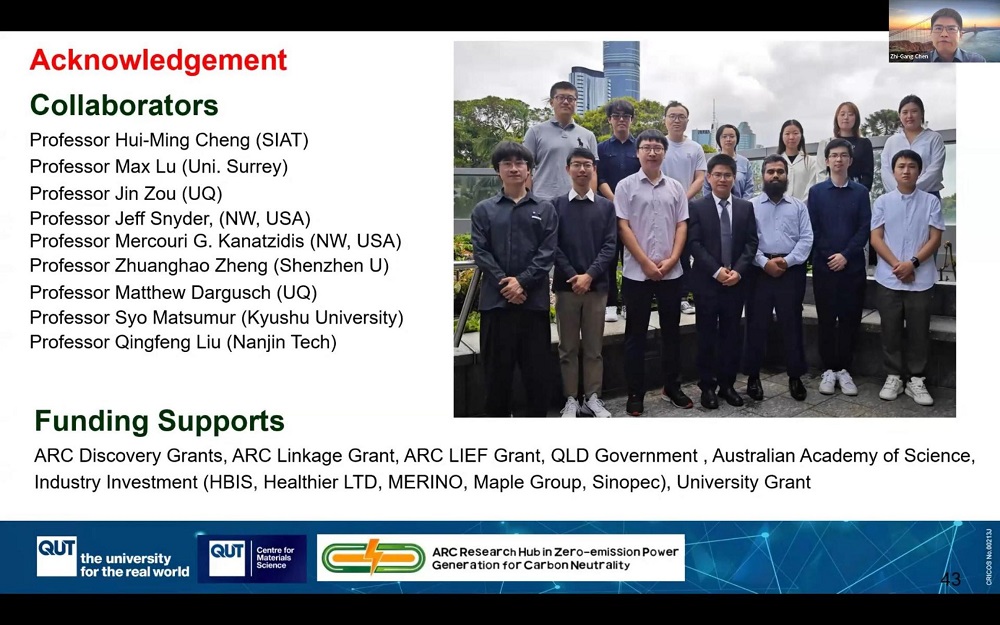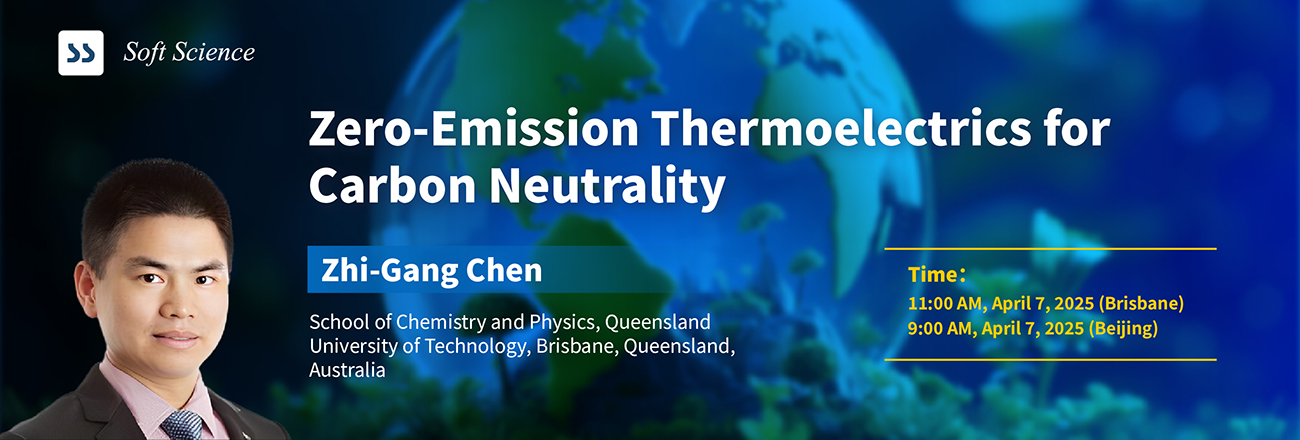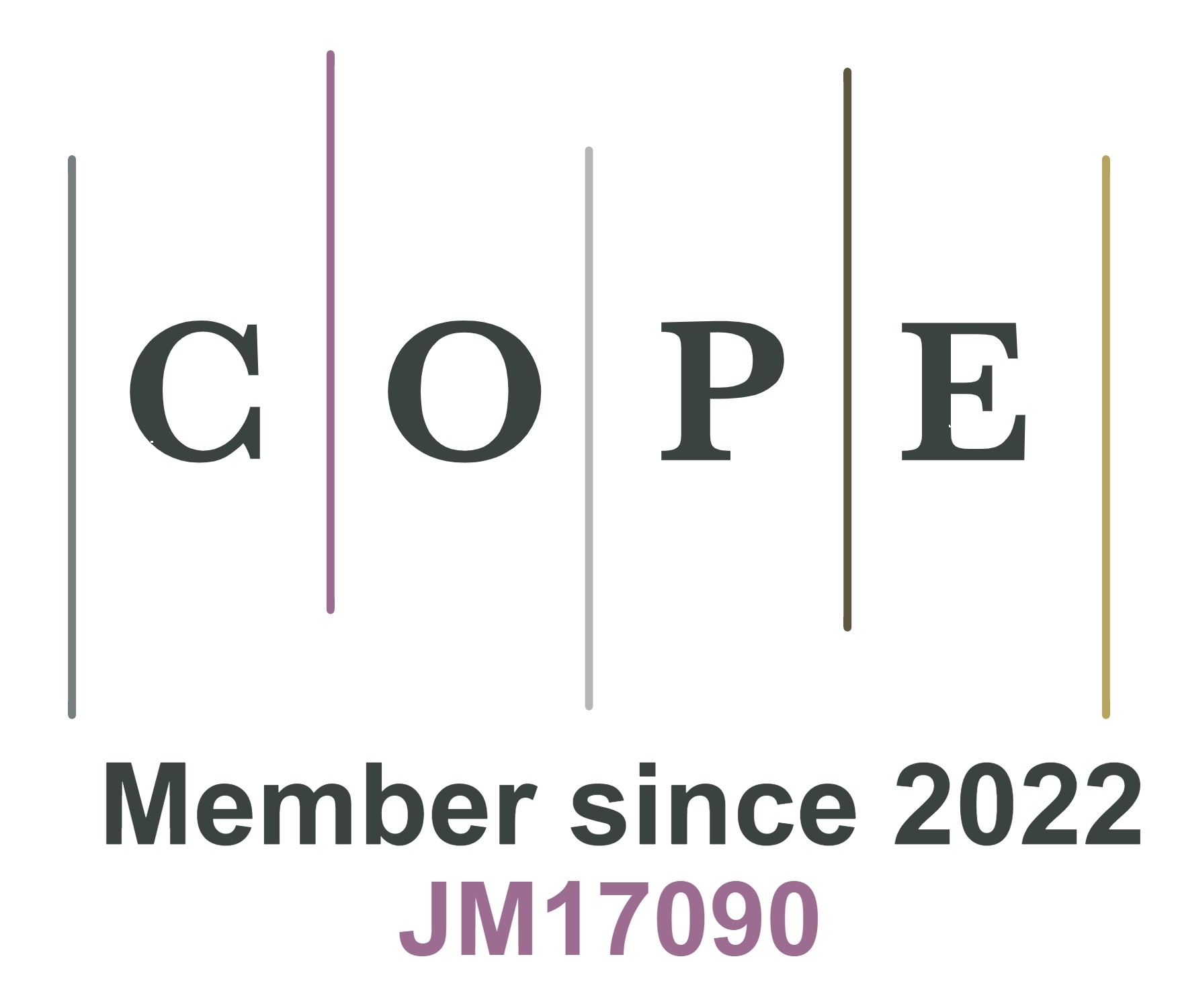Contents
Host

Dr. Yao Wang
School of Materials Science and Engineering, Beihang University, Beijing, China.
Dr. Wang is currently an Associate Professor at Beihang University. She has been dedicated to the fundamental research of functional composite materials and the applied technology of flexible integrated processing and manufacturing.
Dr. Wang is currently an Associate Professor at Beihang University. She has been dedicated to the fundamental research of functional composite materials and the applied technology of flexible integrated processing and manufacturing.
Speaker

Zhi-Gang Chen
Zhi-Gang Chen is a Founding Director for ARC Research Hub in Zero-emission Power Generation for Carbon Neutrality, a Capacity Building Professor of Energy Materials, and ARC Future Fellow at Queensland University of Technology (QUT). He received his Ph.D. in materials science and engineering from the Institute of Metal Research, Chinese Academy of Science, in 2008. His research concentrates on smart functional materials for thermoelectrics and nanoelectronics from synthesizing materials to understanding their underlying physics and chemistry. As a lead Chief Investigator, Dr Chen has won over 50M research funding and published >470 peer-reviewed publications, including Science and Nature Sister journals, with >54,000 Google times and an H index of >125, >10 patents, and delivered over 100 plenary/keynote/invited talks. Prof. Chen is one of Clarivate Web of Science's highly cited researchers (2020-2022) and associate editor in Journal of Materials Science and Technology (Elsevier) and Exploration (Wiley).
Abstract
Climate change caused by the continuous accumulation of greenhouse gases is an imminent threat to mankind and biodiversity. Already a dry land with vulnerable biodiversity, Australia will be hard hit by climate change as evidenced by the recent natural disasters with much increased frequency and intensity. To stop climate change, we need to significantly reduce carbon dioxide (CO2) to net-zero emissions. In this topic, we timely highlight the latest progress on the up-to-the-date thermoelectric devices with their unique designs and compelling thermoelectric efficiency for harvesting renewable electricity from the environment, which will reduce our dependence on carbon-based energy sources. We carefully summarize the structure-related principles and factors that determine the performance of thermoelectric devices and propose strategies for improving their utilities. Besides, we focus on the timeliest designs for inorganic-based devices, organic-based devices, and hybrid-based devices targeting both power generation for zero-emission. Ultimately, we point out the current challenges, controversies, and prospects of thermoelectric devices.
Presentation

Presentation
NaN

Discussion
NaN











